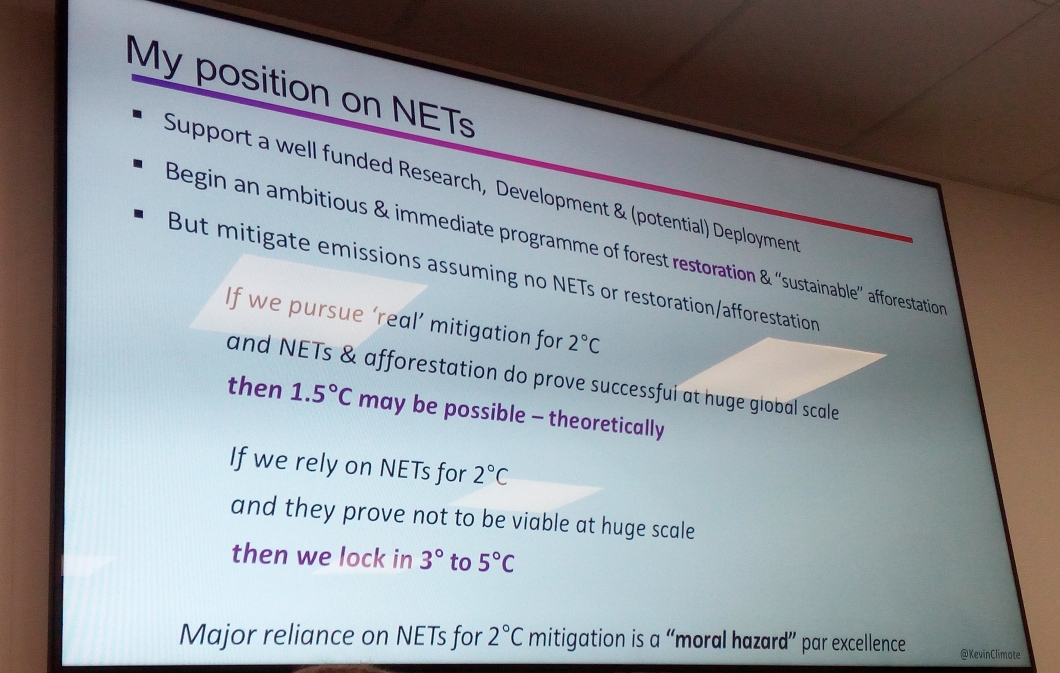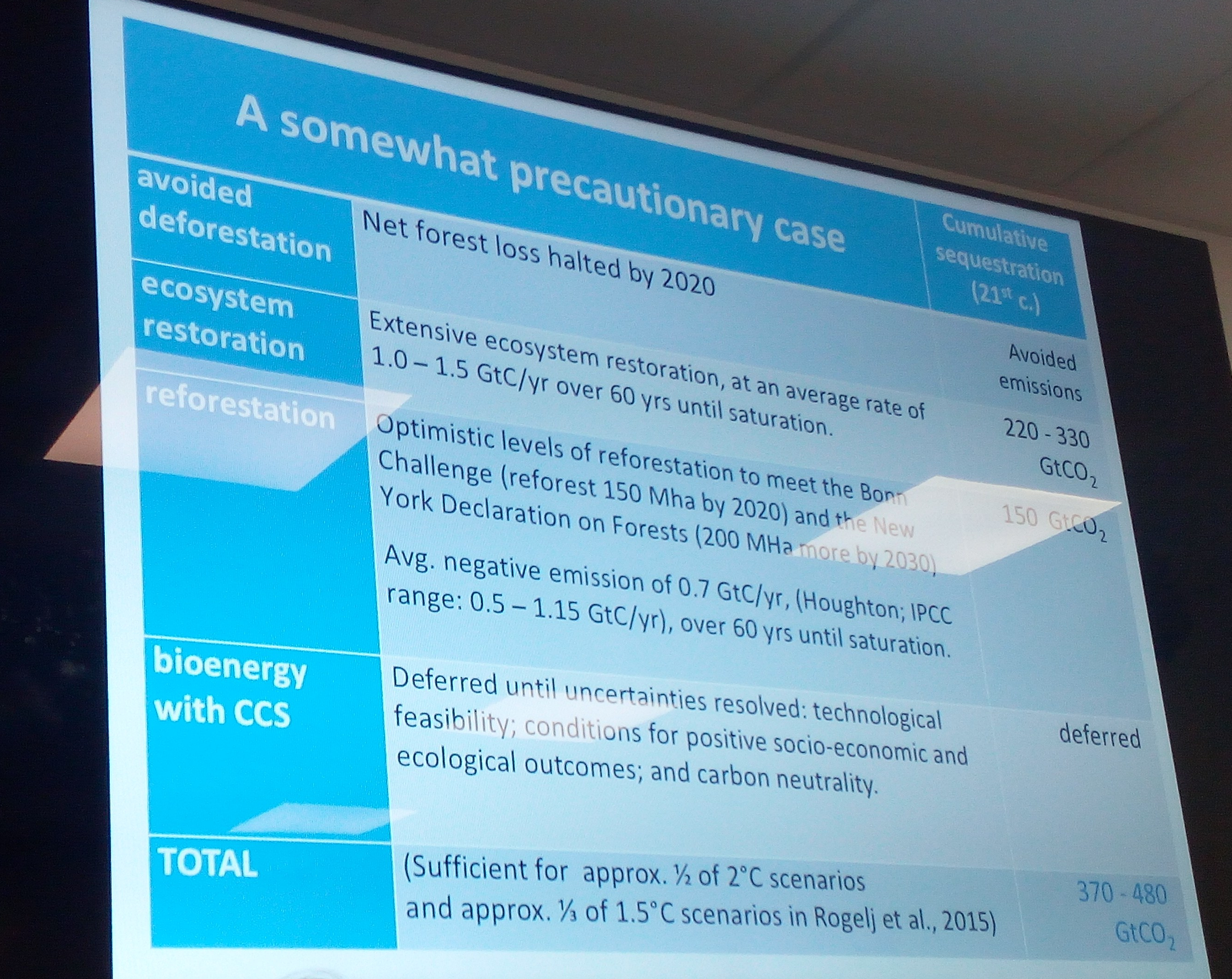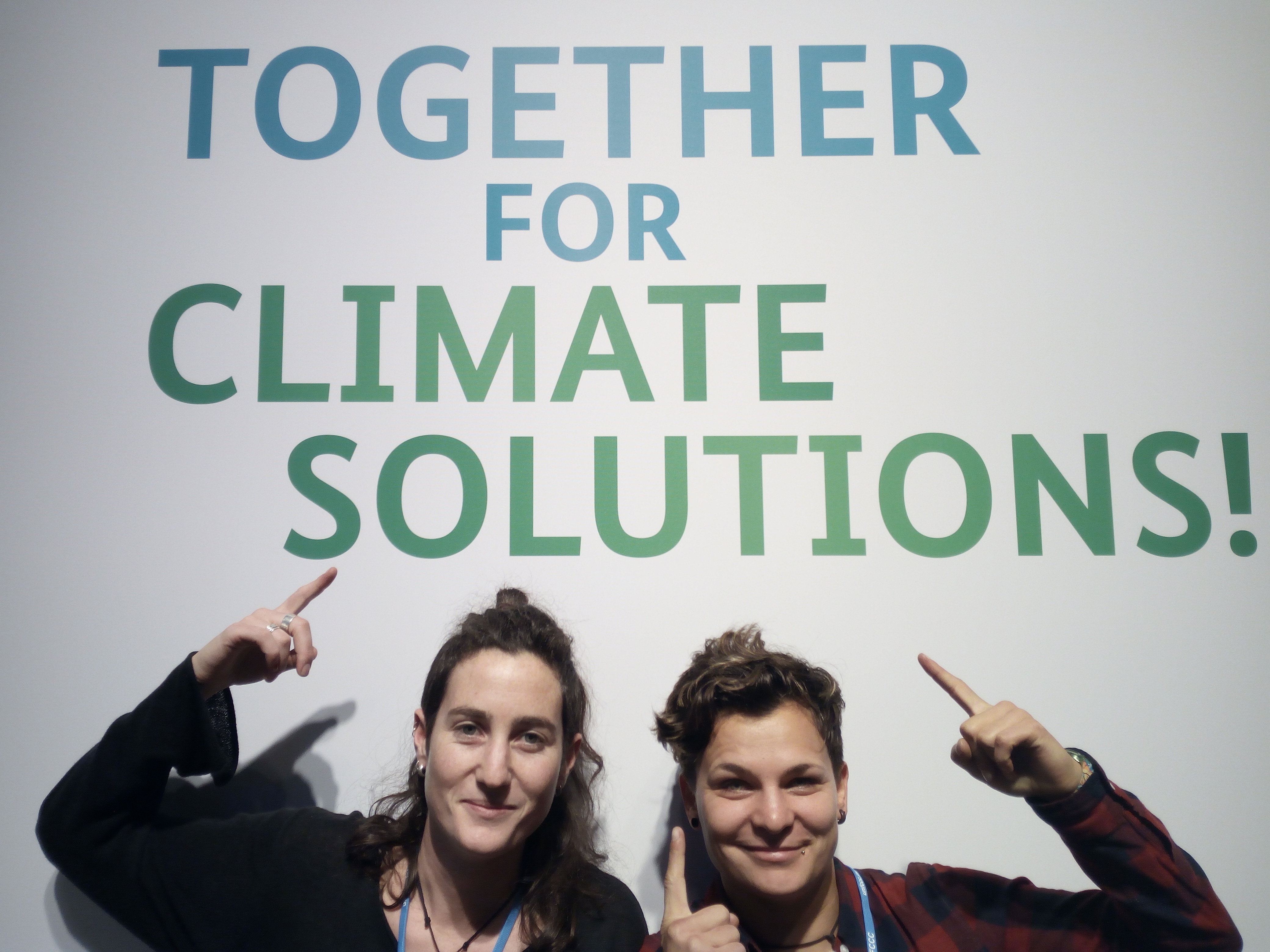Forest restoration – our secret weapon for achieving in the Paris Agreement targets
Obviously we were eager to find out about the secret weapon. The Indigenous Pavilion was completely packed so some of us loitered desperately out the front until we were handed a set of headphones with which we could listen from outside. The presentation began with a nice overview of Negative Emissions Technology (NETs), which are those proposed technologies to take CO2 out of the atmosphere. It became clear that NETs seem unavoidable if we are to limit warming to below 1.5 degrees Celsius, as we hope to do with the Paris Agreement.
Much hope lies in the development of BECCS technology – Biomass Energy with Carbon Capture and Storage. The first speaker, Kevin Anderson (Tyndall Centre for Climate Change Research) warned against relying on the potential of this strategy as it has never been proven to work at scale, and currently comes with huge technical and economic unknowns. Therefore whilst it should be researched and developed, in the mean time we must begin an ambitious and immediate program of forest restoration and afforestation, aiming for a less than 2 degree temperature increase, without assuming results from NETs. If then, NETs prove viable at a large scale, it may be possible to limit warming to less than 1.5 degrees. This is a much better alternative than relying on NETs, which may then prove not to be viable, and resultantly warming could reach 3-5 degrees Celsius (see below image).
 Kevin pointed out that academics and politicians who rely on non-existent Negative Emissions Technologies as climate change mitigation strategies are supporting ongoing fossil fuel use and the continuation of a ´green-washed´ business as usual model.
The following speaker was Kate Dooley from the University of Melbourne, who presented her research that assessed the potential of the three key land-based negative emissions options. Her findings on BECCS, Reforestation and Ecosystem Restoration are summarised here:
Kevin pointed out that academics and politicians who rely on non-existent Negative Emissions Technologies as climate change mitigation strategies are supporting ongoing fossil fuel use and the continuation of a ´green-washed´ business as usual model.
The following speaker was Kate Dooley from the University of Melbourne, who presented her research that assessed the potential of the three key land-based negative emissions options. Her findings on BECCS, Reforestation and Ecosystem Restoration are summarised here:
- BECCS: aside from the technological uncertainty, BECCS is also constrained by NPP (Net Primary Productivity) in the form of biomass/bioenergy supply. The biomass needs are so high and such a large-scale bioenergy production from forests is neither sustainable nor carbon-neutral. These uncertainties and others make estimating its effect too difficult.
- Reforestation: (the re-establishment of forests on lands that were previously forest) has the potential to sequester 150 Gt CO2 this century, if 350 million hectares of land are reforested under the optimistic targets of the Bonn Challenge (150 Mha by 2020) and the New York Declaration on Forests (200 Mha more by 2030).
- Ecosystem Restoration: (allowing the recovery of degraded forests, by withdrawing current human interference) Kate pointed out the greater potential for carbon density in forests restored in this way, as restoration at an ecosystem scale is linked to biodiversity benefits which in turn results in a more resilient forest (from pests, disease etc.), and more secure carbon storage. This has the theoretical potential of removing 1-3 Gt C/yr. from the atmosphere, but given the constraints from existing forest land-use she estimates that between 220 and 330 Gt CO2 could be sequestered this century.
 In conclusion, the potential of land based Negative Emissions Technologies is promising and could seriously contribute to keeping warming below 1.5 degrees, however we must be conservative when estimating their contribution as they come with some serious risks and unknowns. A much bigger discussion is needed around NETs as we progress with the implementation of the Paris Agreement.
In conclusion, the potential of land based Negative Emissions Technologies is promising and could seriously contribute to keeping warming below 1.5 degrees, however we must be conservative when estimating their contribution as they come with some serious risks and unknowns. A much bigger discussion is needed around NETs as we progress with the implementation of the Paris Agreement.
 Charlotte Ross-Harris (left) is studying a Masters in Forest Ecosystem Science at the University of Melbourne, Australia. Florentia Focht (right) is studying a Master in Forest and Wood Science at the Technical University of Munich, Germany. They have enjoyed the opportunity to explore the most recent ideas around combating climate change with forests.]]>
Charlotte Ross-Harris (left) is studying a Masters in Forest Ecosystem Science at the University of Melbourne, Australia. Florentia Focht (right) is studying a Master in Forest and Wood Science at the Technical University of Munich, Germany. They have enjoyed the opportunity to explore the most recent ideas around combating climate change with forests.]]>